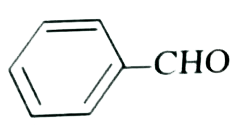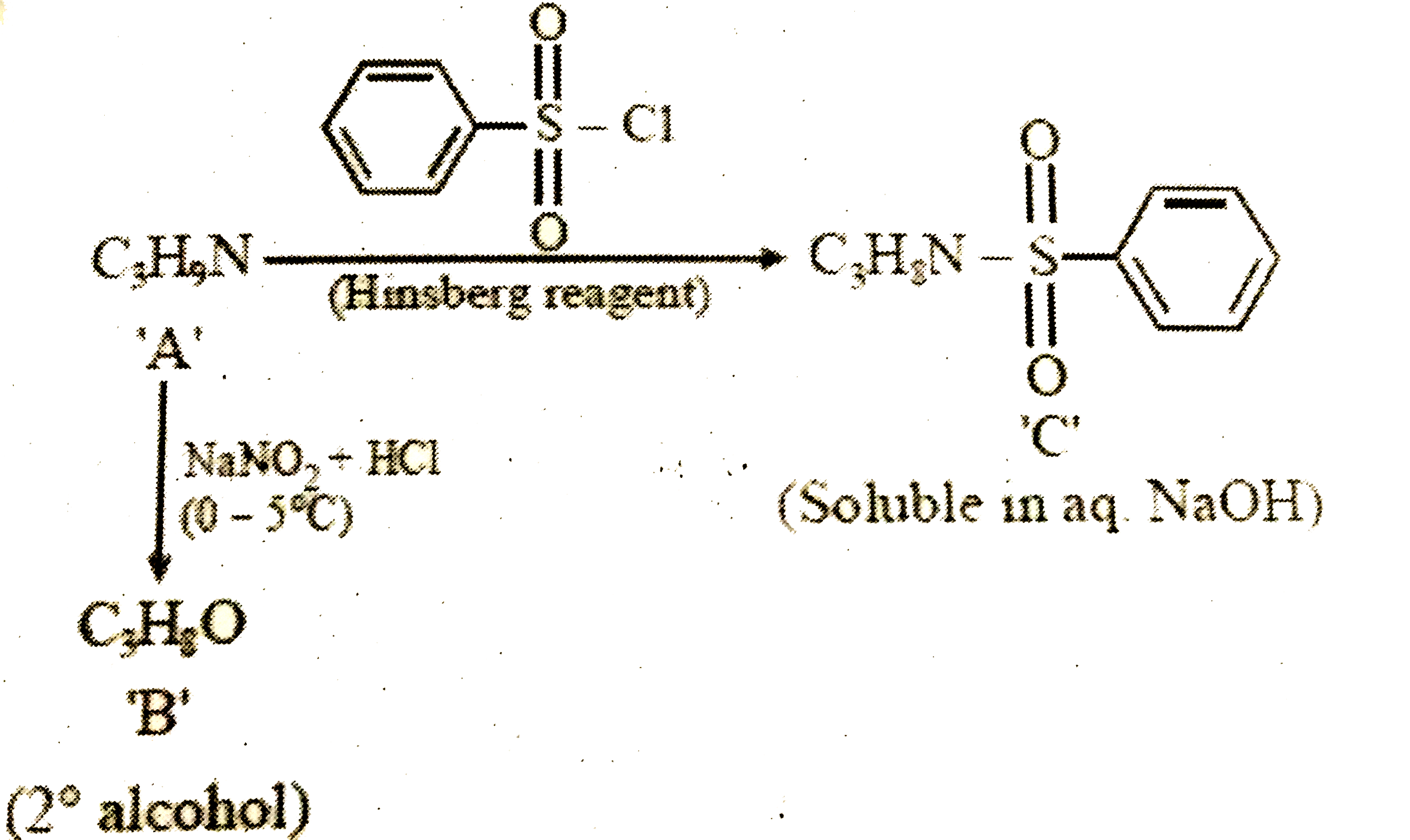Compound 'A' with molecular formula C4H9Br is treated with aq. KOH solution. The rate of this reaction depends upon the the concentration of the compounds 'A' only. When another optically active isomer 'B' of this compound was treated with aq. KOH solution, the rate of reaction was found to be dependent on concentration of compound and KOH both.
(i) Write down the structural formula of both compounds 'A' and 'B'.
(ii) Out of these two compounds, which one will be converted to the product with inverted configuration.
To solve the problem step by step, we will analyze the information given about the compounds 'A' and 'B', their structures, and the mechanisms involved in their reactions with aqueous KOH.
Step 1: Identify Compound 'A'
Given the molecular formula C4H9Br, we need to determine the structure of compound 'A'. Since the reaction with aqueous KOH depends only on the concentration of compound 'A', it indicates that the reaction proceeds via the SN1 mechanism. This suggests that compound 'A' is a tertiary alkyl halide, as tertiary carbocations are more stable.
The structure of compound 'A' can be represented as:
- Compound A: 2-bromobutane (Tertiary bromide)
Structure: (CH3)3CBr
or
Structure: Br-CH(CH3)2−CH3
Step 2: Identify Compound 'B'
Compound 'B' is described as an optically active isomer of compound 'A'. Since it is optically active, it must have a chiral center. The reaction with aqueous KOH depends on both the concentration of compound 'B' and KOH, indicating that it proceeds via the SN2 mechanism.
The structure of compound 'B' can be represented as:
- Compound B: 2-bromobutane (Secondary bromide)
Structure: Br-CH(CH3)−CH2−CH3
Step 3: Determine the Configuration Change
In the SN1 mechanism (for compound 'A'), the reaction leads to the formation of a carbocation, and the nucleophile (OH−) can attack from either side, leading to racemization and no inversion of configuration.
In the SN2 mechanism (for compound 'B'), the nucleophile attacks from the opposite side of the leaving group (Br), leading to inversion of configuration.
Conclusion:
(i) The structural formulas are:
- Compound A: 2-bromobutane (Tertiary)
- Compound B: 2-bromobutane (Secondary, optically active)
(ii) Compound 'B' will be converted to the product with inverted configuration due to the SN2 mechanism.
Given the molecular formula C4H9Br, we need to determine the structure of compound 'A'. Since the reaction with aqueous KOH depends only on the concentration of compound 'A', it indicates that the reaction proceeds via the SN1 mechanism. This suggests that compound 'A' is a tertiary alkyl halide, as tertiary carbocations are more stable.
- Compound A: 2-bromobutane (Tertiary bromide)
Structure: (CH3)3CBr
or
Structure: Br-CH(CH3)2−CH3
Compound 'B' is described as an optically active isomer of compound 'A'. Since it is optically active, it must have a chiral center. The reaction with aqueous KOH depends on both the concentration of compound 'B' and KOH, indicating that it proceeds via the SN2 mechanism.
- Compound B: 2-bromobutane (Secondary bromide)
Structure: Br-CH(CH3)−CH2−CH3
In the SN1 mechanism (for compound 'A'), the reaction leads to the formation of a carbocation, and the nucleophile (OH−) can attack from either side, leading to racemization and no inversion of configuration.
(i) The structural formulas are:
- Compound A: 2-bromobutane (Tertiary)
- Compound B: 2-bromobutane (Secondary, optically active)
Topper's Solved these Questions
- GENERAL PRINCIPLE AND PROCESSES OF ISOLATION OF ELEMENTS Book:NCERT EXEMPLARChapter:GENERAL PRINCIPLE AND PROCESSES OF ISOLATION OF ELEMENTS Exercise:General Principle And Processes Of Isolation Of Elements
Explore 55 Videos
- P-BLOCK ELEMENTSBook:NCERT EXEMPLARChapter:P-BLOCK ELEMENTSExercise:P-Block Elements
Explore 72 Videos
Similar Questions
Compound 'A' with molecular formula C4H9Br is treated with aq. KOH solution. The rate of this reaction depends upon the concentration of the compound 'A' only. When another optically active isomer 'B' of this compound was treated with aq. KOH solution, the rate of reaction was found to be dependent on concentration of compound and KOH both.
(i) Write down the structural formula of both compounds 'A' and 'B'.
(ii) Out of these two compounds, which one will be converted to the product with inverted configuration.
View SolutionCompound 'A' with molecular formula C4H9Br is treated with aq. KOH solution. The rate of this reaction depends upon the the concentration of the compounds 'A' only. When another optically active isomer 'B' of this compound was treated with aq. KOH solution, the rate of reaction was found to be dependent on concentration of compound and KOH both.
(i) Write down the structural formula of both compounds 'A' and 'B'.
(ii) Out of these two compounds, which one will be converted to the product with inverted configuration.
View Solution
Knowledge Check
Which product is formed when the compound
 concentrated aqueous KOH solution ? A
concentrated aqueous KOH solution ? A B
B C
C D
D
Which product is formed when the compound
 is treated with concentrated aqueous KOH solution?A
is treated with concentrated aqueous KOH solution?A B
B C
C D
D
Which product is formed when the compound

is treated with concentrated aqueous KOH solutionA B
B C
C D
D
The compound 'A' having molecular formula C3H9N undergoes following reaction

The compound 'A' will be:-
View SolutionWhich product is formed when the compound is treated with concentrated aqueous KOH solution ?
View SolutionWhich product is formed when
 is treated with concentrated KOH solution ?
is treated with concentrated KOH solution ?
View SolutionA compound X with molecular formula C7H8 is treated with Cl2 in presence of FeCl3. Which of the following compounds are formed during the reaction?
View SolutionWhich product is formed when the compound

is reated with concentrated aqueous KOH solution ?
View Solution